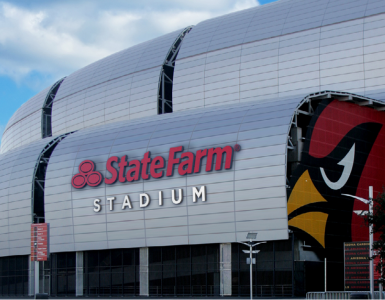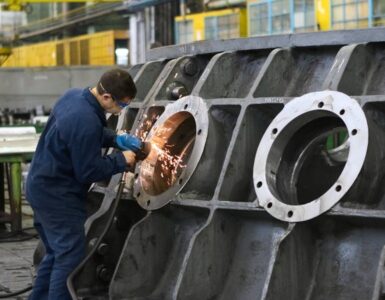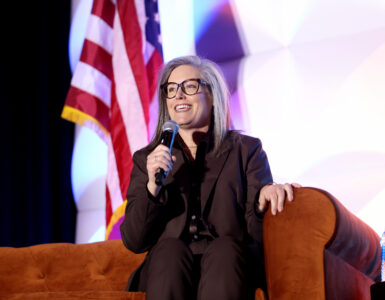Cities and counties suing oil and gas manufacturers over climate change.
School districts taking an e-cigarette producer to court, claiming it is marketing to minors.
Governments suing drugmakers because of overdose deaths.
These are examples of a new generation of class action suits that are benefiting trial attorneys to the tune of hundreds of millions of dollars. But consumers and victims? Not so much.
Trial attorneys courting municipalities for cash settlements
Now local governments are increasingly teaming up with contingency fee lawyers to influence public policy issues through litigation, and businesses are paying the price whether claims are valid or not, said Lauren Sheets Jarrell, counsel for the non-profit American Tort Reform Association (ATRA).
ATRA, the U.S. Chamber of Commerce Institute for Legal Reform, the Arizona Chamber of Commerce and Industry, the National Federation of Independent Business, and other business advocacy groups are working to increase public awareness about class action abuses.
“Some of these lawsuits are looking to hold companies liable regardless of what was understood at the time that the company sold the products or in some cases even if they complied with government regulations or were approved by the government,” Sheets Jarrell said.
Companies often are forced to settle to avoid years of litigation.
What next on the list?
This is a real concern to the business community that is faced with a trial bar association eager to expand a centuries-old public nuisance law into new arenas, she said.
“Automakers could be held liable for accidents caused by drunk drivers, fast food companies could be liable for the cost of obesity, beverage companies could be sued for the cost of cleaning up plastic in oceans.”
Twist on old law benefits attorneys, few others
At the heart of the problem is a new twist on the ancient public nuisance doctrine, business advocacy groups said.
Originally, the doctrine’s main purpose was to protect the public from nuisances like a homeowner hoarding explosives in his garage, a charlatan practicing medicine without a license, or a local factory causing air pollution.
Over the past decade, however, it’s become a new tool for trial attorneys. Some class actions are meritless cases in which up to millions of plaintiffs with unique injuries and grievances are granted class status, often without the knowledge of class members.
Raising awareness about trial attorney abuses
“What we’re seeing is an emerging trend with the trial lawyers and plaintiffs’ trial bar taking an expansive view of the public nuisance law,” Sheets Jarrell. “They’re courting state and local governments to sue over major public policy issues.”
Elected officials, the scientific medical community, law enforcement and other experts are much better suited to tackle these sweeping public concerns, ATRA contends.
“The plaintiffs bar certainly is not looking out for the best interest of the public when its filing these lawsuits,” she said.
Lead paint, drugmaker cases targeted
One of the first highly publicized class actions of this kind was in California in 2000, when 10 counties and cities brought a lawsuit against Sherwin Williams, ConAgra Grocery Products Co. and NL Industries, seeking billions of dollars to remove old lead paint from homes.
It took 19 years for the case to resolve. Last year, the former makers of lead paint agreed to a $305 million settlement to mitigate poisoning dangers still present in old housing.
In the past few years, states’ attorneys generals have jumped onto class action suits to target drugmakers like Purdue Pharma and Johnson & Johnson’s Janssen Pharmaceuticals, blaming them for overdose deaths and injuries.
Oklahoma’s case was the first state lawsuit to go to trial. Johnson & Johnson and its subsidiary Janssen Pharmaceuticals were found liable, and after a bench trial, the judge awarded the state $572 million. In November, the judge whittled that down to $465 million. The state’s attorneys originally asked for more than $17 billion over three decades.
Arizona adopts private attorney contracting transparency and class action reforms
While some states are moving to expand the public nuisance doctrine, others are trying to limit runaway lawsuits.
Arizona in 2011 adopted legislation that established an increased level of transparency in contingency fee contracts the Office of the Attorney General signs with outside counsel. In 2013, the state beefed up the rules surrounding the establishment of classes in class actions, and allowed defendants to immediately appeal class certification decisions.
Business advocacy organizations like the Arizona Chamber of Commerce, which backed the transparency and class action reforms, say the state’s legal environment is an essential part of its overall competitiveness.
“We believe that important public policy issues are best dealt with at the state Legislature or in Congress, as opposed to the courtroom,” said Garrick Taylor, executive vice president for the chamber. “We’ve got a very jobs-friendly legal environment in Arizona. A state’s legal environment is a major contributing factor in its attractiveness to business, so we’ll continue to look for opportunities to make smart reforms.”
Reasons why public policy by litigation is bad for business
Here are a few of the reasons why abusive class action suits harm businesses and consumers, according to the U.S. Chamber of Commerce’s Institute for Legal Reform (ILR):
Abusive lawsuits hurt states ability to attract industry
Perceptions of the fairness and reasonableness of a state’s liability system influence business decisions about where to conduct, expand, or constrict operations or sales. According to the ILR’s 2019 Lawsuit Climate Survey, 89 percent of respondents felt that a state’s litigation environment is likely to impact important business decisions at their companies.
The effects of lawsuit abuse extend beyond America’s borders. High liability costs make U.S. businesses less competitive internationally. One study found that liability costs in the U.S. decrease manufacturing cost competitiveness by at least 3.2 percent. These factors have the potential to discourage foreign direct investment by making the U.S. less attractive to foreign capital.
Excessive Tort Costs Affect Everyone
America has the costliest legal system in the world. In fact, in 2016, costs and compensation paid in the U.S. tort system reached $429 billion.That figure was equivalent to 2.3 percent of U.S. gross domestic product, or $3,329 per household. This per-household cost is even higher in certain states.
The U.S. Tort System Is Hugely Inefficient in Compensating Victims
Not only do the high tort costs drain the U.S. economy, America’s litigation addiction provides little redress for injured parties. Economists have found that only 57 percent of the money spent in the tort system in 2016 went to plaintiff compensation. That’s before contingency fees are subtracted.
Lawsuit Abuse Takes a Disproportionate Toll on Small Businesses
A study of tort liability costs for small businesses indicates that litigation costs small businesses in America over $105 billion per year. These small businesses bear 81 percent of business tort liability costs but take in only 22 percent of revenue.
Because small businesses do not often have significant resources to defend themselves in drawn-out, costly litigation, being named in a frivolous lawsuit could mean a small business must close its doors for good. One in three small business owners have been sued or threatened with a lawsuit, according to a national opinion survey of voters by Penn Schoen Berland and Public Opinion Strategies.
















Add comment